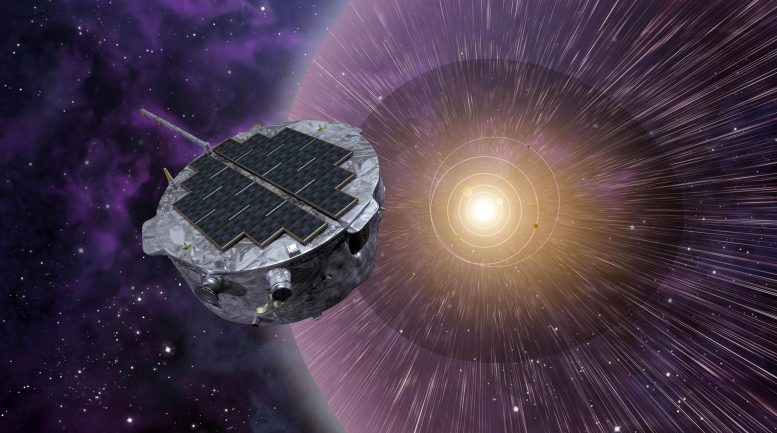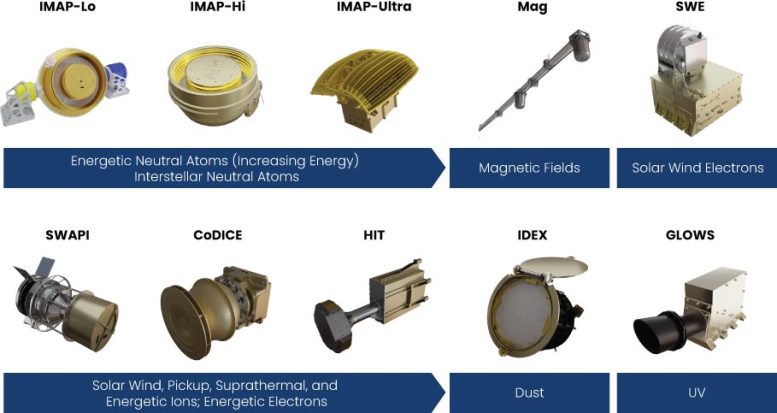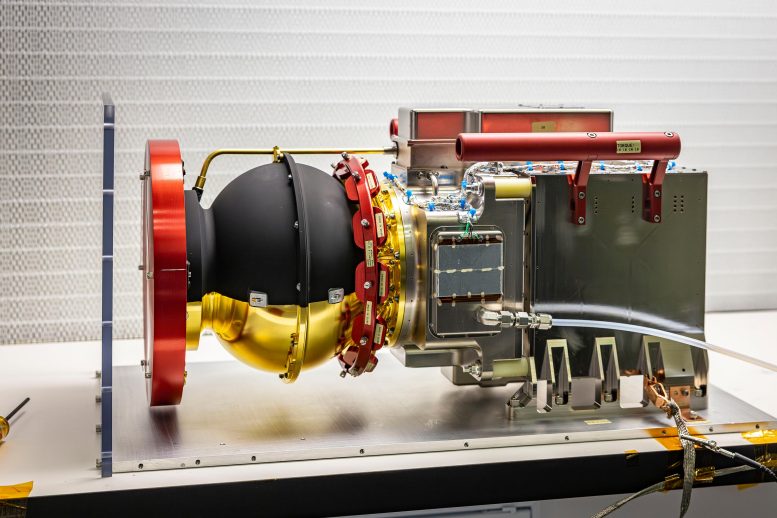
Launching in 2025, NASA’s IMAP mission will delve into the mysteries of the heliosphere, mapping its boundaries and studying solar wind interactions.
With state-of-the-art instruments, this probe aims to boost our knowledge of space weather, offering advanced warnings to safeguard Earth’s technology.
Launch of NASA’s IMAP: A New Era in Space Exploration
On December 3, 2024, NASA completed the installation of the final science instrument — a charged particle detector — on the Interstellar Mapping and Acceleration Probe (IMAP), marking the full integration of all 10 instruments on the spacecraft.
IMAP is scheduled to launch no earlier than September 2025, with a mission to map the boundaries of the heliosphere — the Sun’s protective bubble that shields the solar system from interstellar radiation. This bubble is maintained by the solar wind, a continuous flow of charged particles emitted by the Sun.
Acting as a modern celestial cartographer, IMAP will also chart the distribution of particles in interplanetary space. Its research will tackle two critical questions in heliophysics: how the Sun energizes charged particles and how the solar wind interacts with the surrounding interstellar environment.
Positioned at Lagrange point 1, about one million miles from Earth toward the Sun, IMAP will deliver near real-time data on solar wind conditions, enabling advanced warnings for space weather events.

IMAP’s Scientific Arsenal: Instruments and Collaboration
To achieve these goals, IMAP will use 10 science instruments built by multiple organizations and integrated at the Johns Hopkins Applied Physics Laboratory (APL) in Laurel, Maryland. The instruments, listed in order by when they were integrated, are:
- Interstellar Dust Experiment (IDEX): a mass spectrometer studying interstellar dust and interplanetary dust particles, designed and built by the Laboratory for Atmospheric and Space Physics in Boulder, Colorado.
- IMAP Magnetometer (MAG): a pair of identical magnetometers that measure the magnetic field near the spacecraft, designed and built by Imperial College London.
- IMAP-Ultra: two high-energy-range energetic neutral atom (ENA) imagers designed and built at APL.
- High-energy Ion Telescope (HIT): a high-energy ion imager designed and built by NASA’s Goddard Space Flight Center.
- Solar Wind Electron (SWE) instrument: maps electrons from the solar wind in three dimensions, designed and built by the Los Alamos National Laboratory (LANL) in collaboration with the Southwest Research Institute (SwRI).
- GLObal Solar Wind Structure (GLOWS) instrument: a Lyman-alpha photometer that measures the ultraviolet glow from interstellar hydrogen and helium to investigate the solar wind and studies its evolution over time, designed and built by the Space Research Center of the Polish Academy of Sciences in Warsaw, Poland.
- Solar Wind and Pickup Ion (SWAPI) instrument: measures ions from the solar wind and particles from beyond the solar system, designed and built by Princeton University.
- IMAP-Hi: two medium-energy-range ENA imagers to help advance our understanding of the evolution of the outer heliosphere, designed and built by LANL in collaboration with SwRI, the University of New Hampshire (UNH), and the University of Bern in Switzerland.
- IMAP-Lo: a low-energy-range ENA imager mounted on a pivot platform to help advance our understanding of the evolution of the outer heliosphere, designed and built by UNH in collaboration with SwRI, APL, and the University of Bern.
- Compact Dual Ion Composition Experiment (CoDICE): measures the distributions and composition of interstellar pickup ions (charged particles that make it through the boundary of the heliosphere), designed and built by SwRI.

The integrated spacecraft is now running through a series of operations that simulate the launch and postlaunch environments to ensure it can withstand the rigors of space. While at APL, IMAP will also undergo a vibration and separation shock test, which replicates the launch vehicle separating from the spacecraft after takeoff.
The IMAP mission is led by Princeton University professor and principal investigator David J. McComas, supported by an international team from over 25 partner institutions. The Johns Hopkins Applied Physics Laboratory (APL) is managing the spacecraft’s development, overseeing its construction, and will handle mission operations. IMAP is the fifth mission in NASA’s Solar Terrestrial Probes (STP) Program, which is managed by the Explorers and Heliophysics Projects Division at NASA’s Goddard Space Flight Center. The STP Program is part of the Heliophysics Division within NASA’s Science Mission Directorate.
Never miss a breakthrough: Join the SciTechDaily newsletter.